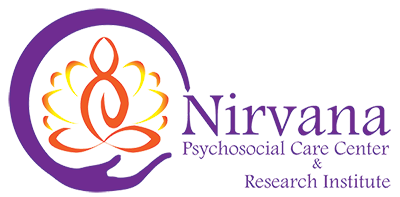Home hospital care through telehealth during COVID-19 pandemic in Nepal
Abstract
COVID-19 pandemic, caused by severe acute respiratory syndrome coronavirus 2 has been occurring in waves due to emergence of different strains. During second wave of COVID pandemic in Nepal, largely caused by Delta variant, due to rapid rise in cases, existing hospitals and health facilities were overwhelmed. As a result, telemedicine was expanded to help reduce strain on the healthcare system and meet unusually high demands. A team of physicians with the support from the local government provided hospital level care for patients at home in rural district of Dang in Nepal. This research analyzes implementation of this model of care and outcomes based on review of patient records and treatment guidelines. Within a month, from May 5 to June 13, 2021, a total of 102 patients received care at home. While most patients had mild to moderate disease, 12.8% of patients had severe disease. Telemedicine usage was highest among the 40-59 years age group, with overall recovery rate of 85.3%. The patient satisfaction survey revealed that majority, 86.5% were happy with the medical care they received. This home hospital care model has shown excellent clinical outcomes and high patient satisfaction even in resource limited setting.
References
World Health Organization. Nepal: WHO Coronavirus Disease (COVID-19) Dashboard with Vaccination Data [Internet]. 2021 [cited 2021 May 28]. Available from: https://covid19.who.int/region/searo/country/np
Dhital K. Nepal Covid-19 impact worse than official figures: Only hospital deaths are counted, without testing daily caseload total is meaningless. Nepali Times [Internet]. 2021 May 30 [cited 2021 Jun 13]; Available from: https://www.nepalitimes.com/latest/nepal-covid-19-impact-worse-than-official-figures/
Ministry of Health and Population, Nepal. CoVid19-Dashboard [Internet]. 2021 [cited 2021 May 28]. Available from: https://covid19.mohp.gov.np/
World Health Organization. COVID-19 Clinical management: living guidance [Internet]. Geneva: World Health Organization; 2021 Jan [cited 2021 May 27] p. 81. Available from: https://apps.who.int/iris/handle/10665/338882
Nepal Medical Council COVID-19 Treatment Guidance Committee. Interim Clinical Guidance For Care of Patients with COVID-19 in Healthcare Settings [Internet]. Kathmandu: Nepal Medical Council; 2020 Oct p. 47. Available from: https://nmc.org.np/files/4/NMC%20Clinical%20Guidance%20Update%20%202_Oct_21_2020.pdf
Nepal Government Ministry of Health and Population. COVID Hospital [Internet]. [cited 2021 Jun 18]. Available from: https://covid19.mohp.gov.np/hospital/covid_hospital.html
Car J, Koh GC, Foong PS, Wang CJ. Video consultations in primary and specialist care during the covid-19 pandemic and beyond. BMJ. 2020 Oct 20;371:m3945. doi: 10.1136/bmj.m3945. PMID: 33082127.
Hollander JE, Carr BG. Virtually Perfect? Telemedicine for Covid-19. New England Journal of Medicine. 2020; 382(18), 1679-1681. https://doi.org/10.1056/NEJMp2003539
Internet penetration rate in Nepal from 2010 to 2019 [Internet]. Statista. 2021 [cited 2021 Jun 10]. Available from: https://www.statista.com/statistics/765517/internet-penetration-rate-nepal/
Bhatta R, Aryal K, Ellingsen G. Opportunities and challenges of a rural-telemedicine program in Nepal. J Nepal Health Res Counc. 2015;13(30):149–53. PMID: 26744201.
Copyright (c) 2022 Authors

This work is licensed under a Creative Commons Attribution 4.0 International License.
The author(s) retain the ownership of the copyrights for their work published in EJMS without any restrictions. Upon submission, the author(s) grants EJMS a license to publish, including to display, store, copy, and reuse the published content.
License to Publish
By submitting a manuscript to EJMS, the author(s) grant the journal a non-exclusive license to:
- Publish and distribute the content in all formats, media, and platforms (both existing and future), while identifying EJMS as the original publisher.
- Reproduce, display, and store the content in both print and online formats, including institutional and digital repositories.
- Translate, adapt, and summarize the work, including reprints, extracts, and abstracts.
- Develop derivative works based on the original content.
- Include the work in electronic databases and provide links to third-party materials.
Creative Commons Licensing
In addition to EJMS’s publishing rights, authors grant third parties the right to use, share, and distribute their work under the Creative Commons Attribution 4.0 (CC BY 4.0) International License. This allows unrestricted use of the content, provided proper attribution is given to the original author(s) and the journal.


